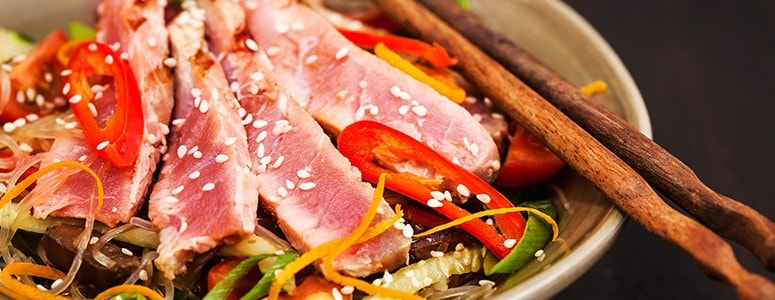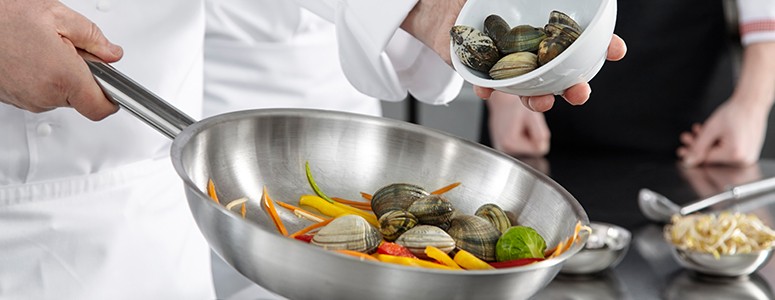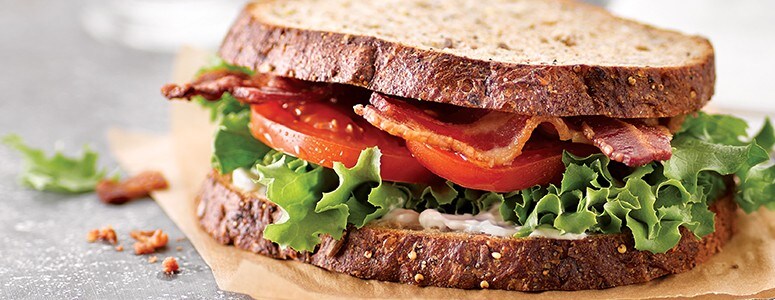#1 Keep it Short
Use short descriptions that communicate the high-impact flavours of your dishes in a quick scan. Include sourcing information (e.g., “locally grown”) when possible. One sentence or listing of ingredients is ideal.

Example: Pan-Seared Tuna with Wasabi Aioli
Cooked-to-order tuna is lightly drizzled with bold wasabi aioli and served with a smoky, farm-fresh charred vegetable medley.
#2 Avoid Kitchen Jargon

Kitchen jargon can distract guests from visualizing the dish. Taste is king, so focus more on flavour rather than culinary terms.
Words to avoid: Soigne, bound salad, deglaze, egg wash, parboil, sweat
#3 Use Words that Engage the Senses

This tactic is especially important when trying to overcome the perception of “healthy” being interpreted as bland. The best menu descriptions kick guests’ senses into full gear and help them imagine the flavours of your dishes. Use words such as: crunchy, spicy, savoury or creamy.
#4 Know Your Brand Voice
Your menu descriptions should match the restaurant brand voice you want to portray to your guests.

Example: Grandma’s classic southern deep-fried chicken served on a waffle with a side of grits and syrup for dunking. Or: Flash-fried chicken cutlets served on a fluffy Belgian pastry with a side of polenta and maple syrup.
#5 Mention Brand Names
In some but not all cases, it’s appropriate to mention brand names within your menu descriptions so your guests know you only buy the best ingredients. Knowing and featuring the brands your guests love is a great way to draw them into a menu item.

Example: The Classic Club
Toasted whole wheat with thinly sliced turkey, crispy bacon, fresh lettuce and tomato with Hellmann’s® Real Mayonnaise.



